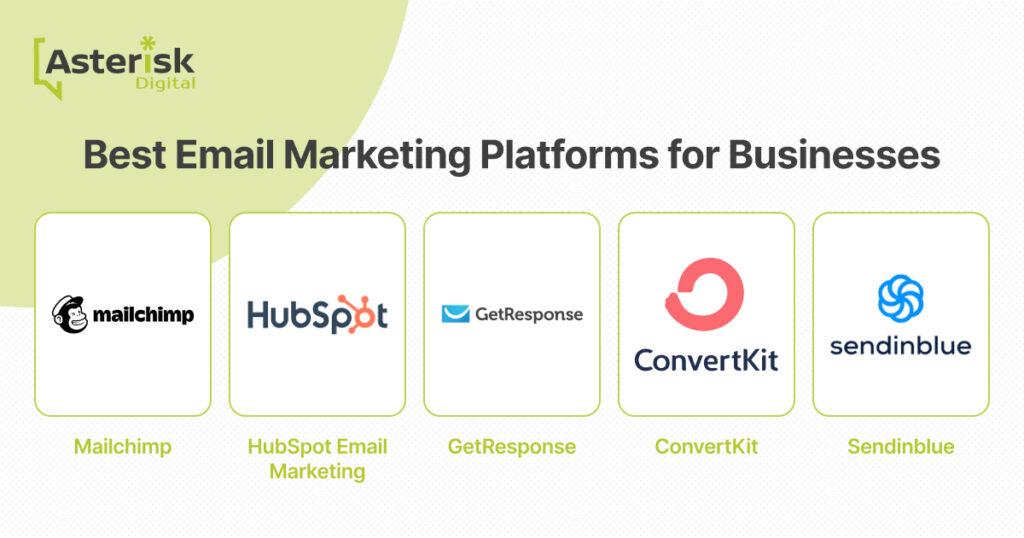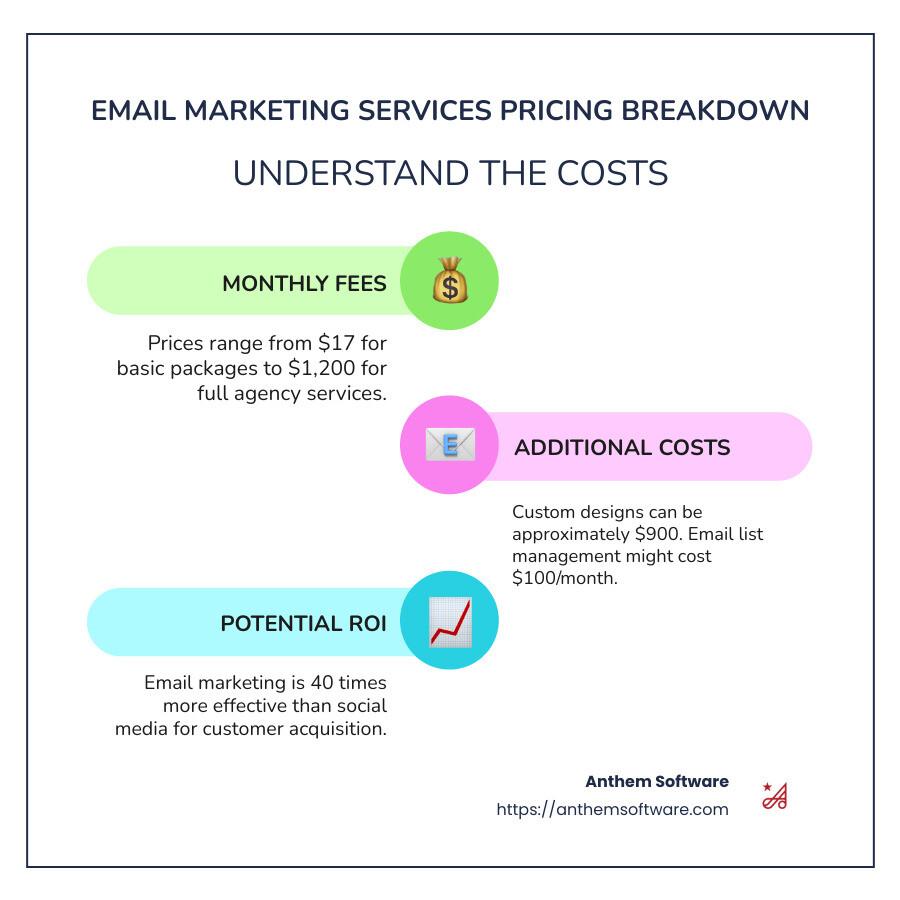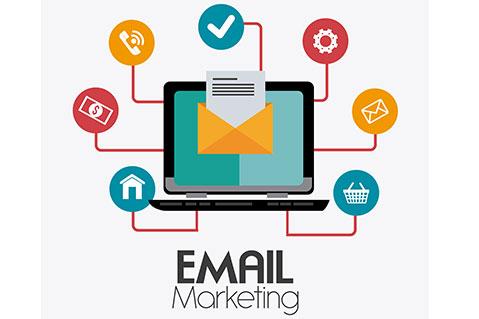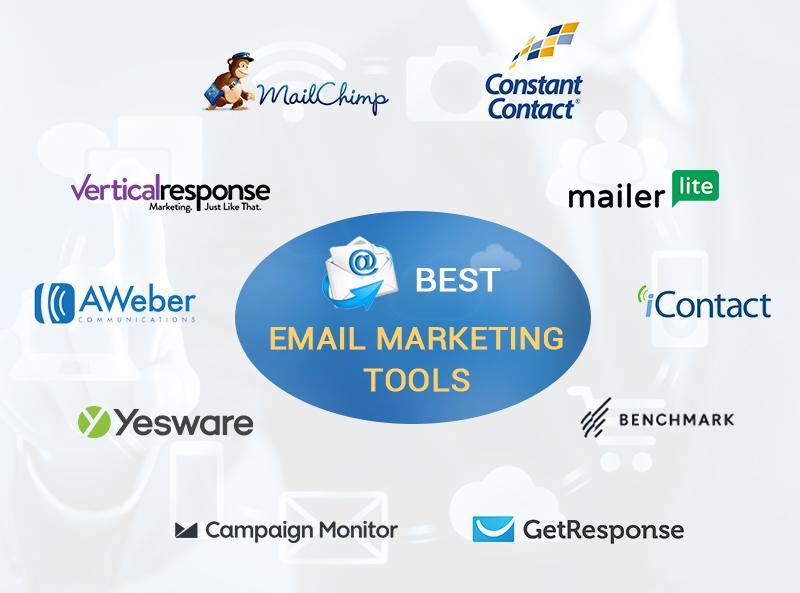A Guide to the 14 Best Email Marketing Platforms
In today’s fast-paced digital landscape, where every click counts and attention spans are shorter than ever, effective communication is more crucial than it’s ever been. And what’s the best way to reach your audience directly? You guessed it—email marketing! But with so many platforms available, how do you choose the right one to elevate your brand and connect with your customers?
Fear not! We’ve done the heavy lifting for you. In this guide, we’ll explore the 14 best email marketing platforms that stand out from the crowd. Whether you’re a seasoned marketer or just starting your journey, these tools offer a range of features tailored to meet your unique needs. From user-friendly interfaces to advanced analytics, we’ll help you find the perfect fit to engage your audience, boost conversions, and build lasting relationships.
So grab your favorite drink, get comfy, and let’s dive into the world of email marketing platforms that can transform your campaigns into powerful tools for growth and success!
Exploring the Top Features to Look for in Email Marketing Platforms
When selecting the right email marketing platform, several features can significantly enhance your marketing efforts and streamline your campaigns. Here are key elements to consider:
- Ease of Use: A user-friendly interface allows you to create, edit, and manage your email campaigns with minimal hassle. Look for platforms that offer drag-and-drop editors and intuitive navigation.
- Automation Capabilities: Automation can save time and improve engagement. Choose a platform that provides robust automation tools to set up drip campaigns, welcome emails, and follow-ups based on user behavior.
- Segmentation and Targeting: Advanced segmentation options enable you to tailor your messages to specific audience groups. This could include demographics, engagement levels, or purchase history.
- Analytics and Reporting: Comprehensive analytics provide insights into open rates, click-through rates, and conversion metrics. Look for platforms that offer customizable reports for a deeper understanding of your campaign performance.
- Integration Capabilities: Ensure the platform integrates seamlessly with your existing tools, such as CRM systems, e-commerce platforms, and social media, to create a cohesive marketing strategy.
- Mobile Optimization: With mobile email opens on the rise, ensure the platform you choose supports mobile-responsive templates and previews to reach your audience effectively.
Another essential feature is customer support. A responsive support team can be invaluable as you navigate the complexities of email marketing. Look for platforms that offer 24/7 support through multiple channels, including live chat, email, and phone assistance.
Lastly, consider the pricing structure. Many platforms offer tiered pricing based on the number of subscribers or features included. It’s crucial to find an option that aligns with your budget without sacrificing essential functionality. To help you compare, refer to the table below:
| Platform | Starting Price | Key Features |
|---|---|---|
| Mailchimp | Free | Easy-to-use editor, automation, analytics |
| Constant Contact | $20/month | Segmentation, integrations, live support |
| Sendinblue | $25/month | SMS campaigns, automation, A/B testing |
| AWeber | $19/month | Email templates, automation, customer support |
By evaluating these features, you can select an email marketing platform that not only meets your current needs but also grows with your business. Prioritize what matters most to you and ensure that the platform aligns with your marketing goals.
Why User-Friendly Interfaces Matter More Than You Think
When it comes to email marketing platforms, the user interface can make or break your marketing efforts. A sleek, intuitive interface not only enhances user experience but also boosts productivity. Imagine trying to navigate a complicated system while you’re on a tight deadline. Frustrating, right? An easy-to-use interface reduces the learning curve, enabling marketers to focus on crafting compelling emails rather than wrestling with software.
Moreover, a user-friendly design encourages creativity and innovation. When you don’t have to battle confusing menus or cryptic symbols, you can concentrate on what truly matters: engaging your audience with stunning visuals and persuasive copy. Platforms that provide drag-and-drop functionalities, pre-designed templates, and straightforward editing tools empower users to produce high-quality emails in a fraction of the time. This efficiency translates to higher productivity and, ultimately, better results.
Consider the importance of analytics as well. A well-designed interface will present data in a way that’s easy to understand at a glance. Whether it’s open rates, click-through rates, or conversion metrics, being able to quickly digest this information can inform your strategy and help you pivot when necessary. You want insights that are visually appealing and straightforward, not buried under layers of complex charts and graphs.
In addition, a responsive user interface can enhance collaboration among team members. If everyone on your marketing team can navigate the same interface with ease, it fosters better communication and collaboration. You can share ideas, provide feedback, and make edits in real time without getting bogged down by technical difficulties. This synergy can lead to more effective campaigns and, consequently, better engagement with your target audience.
Lastly, don’t underestimate the role of accessibility in user-friendly interfaces. A platform that prioritizes accessibility ensures that all users, regardless of their technical proficiency or physical ability, can utilize its features fully. This inclusivity not only broadens your potential user base but also aligns with ethical marketing practices, making your campaigns resonate with a wider audience.

The Power of Automation: How to Save Time and Boost Engagement
In today’s fast-paced digital landscape, automation has emerged as a game changer for marketers. By streamlining repetitive tasks, businesses can focus on creating meaningful connections with their audience. Imagine sending personalized emails to your subscribers at the perfect moment, all without lifting a finger. That’s the magic of automation!
One of the significant advantages of using automated email marketing platforms is the ability to segment your audience effectively. By tailoring your messages based on user behavior and demographics, you can deliver content that resonates with each group. Here are some key benefits of automation:
- Time Savings: Automate routine tasks like welcome emails and follow-ups, freeing up your schedule for strategic planning.
- Increased Engagement: Send targeted messages at optimal times, enhancing open rates and click-through rates.
- Consistent Communication: Maintain regular contact with your audience without the daily grind of manual sending.
Moreover, most platforms offer analytics tools that allow you to measure and optimize your campaigns effortlessly. You can track metrics such as open rates, conversions, and user interactions, giving you insights to fine-tune your strategy continuously. Here’s a quick overview of essential features to look for in top email marketing platforms:
| Feature | Importance |
|---|---|
| Automation Workflows | Automate customer journeys for personalized experiences. |
| A/B Testing | Optimize subject lines and content for better performance. |
| Segmentation | Target specific groups for higher engagement rates. |
| Analytics Dashboard | Measure success and tweak strategies in real-time. |
Incorporating automation into your email marketing strategy is not just about saving time; it’s about enhancing the customer experience. By delivering the right message at the right time, you can foster loyalty and drive conversions. With the right platform, the possibilities are endless, and your audience will appreciate the personalized touch!

Cost-Effective Solutions for Every Budget
Email marketing doesn’t have to break the bank. With a variety of platforms available, businesses of all sizes can find options that deliver effective results without a hefty price tag. Whether you’re just starting out or looking to expand your existing campaigns, there’s a solution tailored to your budget.
Many platforms offer affordable plans that cater to different needs. Here are a few standout options:
- Mailchimp: Known for its user-friendly interface, Mailchimp’s free tier allows you to send up to 10,000 emails per month to 2,000 subscribers, making it perfect for startups.
- Sendinblue: This platform provides a free plan that includes unlimited contacts and allows you to send up to 300 emails per day—great for growing businesses.
- MailerLite: With a free plan for up to 1,000 subscribers, MailerLite is ideal for small businesses looking for simplicity and efficiency.
When evaluating different platforms, consider not just the pricing, but the features that come with them. Look for options that include:
- Automation Tools: Save time and streamline your campaigns with automation features.
- Email Segmentation: Target specific audiences to improve engagement and conversion rates.
- Analytics and Reporting: Track the success of your campaigns to make data-driven decisions.
| Platform | Free Plan Limit | Starting Price |
|---|---|---|
| Mailchimp | 2,000 subscribers | $13/month |
| Sendinblue | Unlimited contacts, 300/day | $25/month |
| MailerLite | 1,000 subscribers | $10/month |
Choosing the right email marketing platform involves balancing your budget with the features that will drive your success. Opt for a tool that not only fits your current financial capacity but also allows for future growth. By investing wisely in your email marketing strategy, you can create impactful campaigns that resonate with your audience and drive your business forward.

Integrations That Make Your Life Easier: What to Consider
When selecting an email marketing platform, it’s essential to consider how well it integrates with your existing tools and systems. The right integrations can streamline your workflow, enhance your marketing efforts, and ultimately save you time and money. Here are some key factors to keep in mind:
- CRM Compatibility: Ensure that the email marketing platform integrates seamlessly with your customer relationship management (CRM) system. This integration allows you to synchronize contacts, track interactions, and segment your audience effectively.
- E-commerce Integration: If you run an online store, look for platforms that connect effortlessly with your e-commerce solutions like Shopify or WooCommerce. This will enable you to track customer behavior and automate cart abandonment emails, boosting your sales potential.
- Social Media Connections: Choose a platform that allows easy integration with your social media accounts. This will help you share your email campaigns widely and gather insights on how your audience engages with your content across different channels.
Another critical consideration is the availability of API access. If you have specific needs or custom applications, a robust API can make all the difference. This allows you to build custom workflows and automate processes that fit your unique business model.
| Feature | Importance |
|---|---|
| Automated Workflows | Enhances efficiency by automating repetitive tasks. |
| Real-time Analytics | Provides instant insights into campaign performance. |
| Third-party Integrations | Expands functionality by linking to other tools. |
Lastly, don’t underestimate the power of user-friendly interfaces and customer support. A tool that’s easy to navigate will reduce the learning curve for your team and improve overall productivity. Check if the platform offers tutorials, live chat, or extensive documentation to assist you when needed.
By carefully evaluating these integration aspects, you can select an email marketing platform that not only meets your current needs but also adapts to your future growth. Simplifying your processes will leave you more time to focus on crafting effective campaigns that resonate with your audience.
Personalization Techniques for Maximum Impact
To truly harness the power of email marketing, personalization is essential. It’s no longer enough to send generic blasts to your entire list; instead, you need to connect with your audience on a personal level. Here are some proven techniques to enhance personalization and maximize the impact of your campaigns.
- Dynamic Content: Utilize dynamic content blocks that change based on subscriber data. For instance, show different product recommendations based on past purchases or browsing behavior. This creates a more tailored experience for each recipient.
- Segmentation: Divide your audience into smaller, targeted groups based on demographics, interests, or behaviors. By sending tailored messages to each segment, you can significantly increase engagement rates.
- Personalized Subject Lines: Leverage the power of personalization in subject lines. Including the recipient’s name or referencing specific interests can dramatically improve open rates.
Another effective strategy is to implement behavioral triggers. By automating emails based on user actions, such as cart abandonment or product views, you can deliver timely and relevant messages that resonate with your audience. Consider setting up a series of follow-up emails triggered by specific actions:
| Action | Email Type | Objective |
|---|---|---|
| Cart Abandonment | Reminder Email | Encourage purchase completion |
| New Subscriber | Welcome Series | Introduce brand and products |
| Product View | Follow-up Recommendation | Suggest related products |
don’t underestimate the power of customer feedback. Implement surveys and feedback forms to understand your audience better and gather insights into their preferences. Use this data to refine your personalization tactics continuously, making your emails more relevant and engaging over time.

Analyzing Deliverability Rates and Why They Should Be Your Priority
When it comes to email marketing, deliverability rates are a crucial aspect that can make or break your campaign. High deliverability ensures that your emails land in the inbox rather than the dreaded spam folder. So, why should you prioritize analyzing these rates?
First and foremost, understanding your deliverability rates allows you to:
- Identify potential issues: If your emails are frequently landing in spam, it’s essential to investigate the underlying causes—be it poor sender reputation, low engagement rates, or content that triggers spam filters.
- Optimize your strategy: By tracking deliverability, you can fine-tune your email marketing strategy to improve engagement. This might involve segmenting your audience more effectively or A/B testing subject lines.
- Increase ROI: Higher deliverability means more of your audience sees your emails, which can lead to increased conversions and ultimately a better return on your marketing investment.
Deliverability isn’t just a number; it’s a reflection of your brand’s credibility. A consistent failure to reach your audience can harm your sender reputation and make it harder for your emails to get through in the future. Establishing a positive sender reputation involves:
- Maintaining a clean list: Regularly removing inactive subscribers will help improve overall engagement rates.
- Using authentication protocols: Implementing SPF, DKIM, and DMARC will signal to ISPs that your emails are legitimate and trustworthy.
- Focusing on quality content: Craft emails that provide value to your subscribers, ensuring they look forward to your communications.
To help visualize the importance of deliverability rates, consider the following table that outlines common factors affecting deliverability and their potential impact:
| Factor | Impact on Deliverability |
|---|---|
| Sender Reputation | High reputation increases inbox placement. |
| Email Engagement | Higher engagement rates enhance deliverability. |
| Content Quality | Valuable content reduces spam complaints. |
| Authentication | Correct setup boosts credibility with ISPs. |
focusing on deliverability rates isn’t just a technical necessity—it’s a strategic imperative. By prioritizing this aspect of your email marketing, you can ensure that your carefully crafted messages are not only created but also seen and acted upon by your target audience. Remember, every email that lands in the inbox is a step closer to achieving your marketing goals.
Best Practices for Designing Eye-Catching Emails
Creating emails that grab attention and drive engagement is essential in today’s crowded inboxes. Here are some key practices to make your emails not just seen, but also appreciated.
- Use a Clean Layout: A cluttered email can overwhelm your readers. Aim for a simple, organized layout that guides the reader’s eye. Utilize white space effectively to make your content more digestible.
- Compelling Subject Lines: The subject line is your first impression. Craft enticing subject lines that spark curiosity or convey urgency. Keep them short and to the point, ideally under 50 characters.
- Mobile Optimization: With a significant portion of emails being opened on mobile devices, ensure your design is responsive. Test your emails across various devices and screen sizes to guarantee they look great everywhere.
- Visual Hierarchy: Use headings, subheadings, and bullet points to create a clear hierarchy. This makes it easier for readers to scan and find the information they need quickly.
- Strong Call-to-Action (CTA): Every email should have a clear, compelling CTA. Use contrasting colors and ensure it’s prominently displayed. Action-oriented wording can significantly increase click-through rates.
In addition to these crucial elements, consider integrating dynamic content that caters to your audience’s preferences. Personalization can significantly enhance your email’s effectiveness. Use data to segment your audience and tailor your messages to meet their specific needs and interests.
| Email Element | Best Practice |
|---|---|
| Subject Line | Keep it under 50 characters, be enticing |
| Layout | Simple and organized with plenty of white space |
| Images | Use high-quality visuals that represent your brand |
| CTA | Clear, visible, and action-oriented |
| Mobile Friendliness | Ensure responsive design for all devices |
By implementing these strategies, your emails can not only capture attention but also foster a deeper connection with your audience. Consistently applying these best practices will lead to improved engagement and conversions over time.

Customer Support: The Unsung Hero of Email Marketing Success
In the realm of email marketing, the effectiveness of campaigns often hinges on the quality of customer support provided by the platform. While flashy templates and sophisticated analytics tools are crucial, it’s the behind-the-scenes assistance that can truly elevate a brand’s communication strategy. Having a responsive and knowledgeable support team at your disposal ensures that any hiccups can be swiftly addressed, ultimately enhancing your campaign’s performance.
Think about it: when you encounter a technical issue or have a burning question about best practices, who do you turn to? The best email marketing platforms recognize this need and prioritize customer support as a key component of their service. Here are some ways in which stellar support can make a difference:
- Quick Resolutions: Time is of the essence in the digital landscape. A support team that responds promptly can help you resolve issues that may derail your campaigns.
- Expert Guidance: Whether you’re a novice or an experienced marketer, having access to knowledgeable staff can provide insights that lead to more effective campaigns.
- Resources and Training: Good platforms offer extensive resources, including tutorials, webinars, and FAQs, to empower users and enhance their marketing skills.
Moreover, the quality of customer interaction can reflect the overall ethos of a brand. Platforms that emphasize exceptional support foster a sense of trust and loyalty among their users. This relationship can translate into better user engagement, higher open rates, and ultimately, increased revenue. Consider the following factors when evaluating customer support:
| Support Feature | Benefits |
|---|---|
| Live Chat | Immediate assistance without leaving your dashboard. |
| Email Support | Detailed responses with ample documentation. |
| Phone Support | Real-time solutions for urgent issues. |
| Community Forums | Peer support and shared insights from other users. |
Ultimately, choosing a platform with robust customer support can mean the difference between a mediocre campaign and one that thrives. It’s not just about selecting the right tools; it’s about ensuring you have the backing to use those tools effectively. When you’re armed with support, you’re not just sending emails—you’re building relationships, fostering engagement, and driving success. So, as you explore your options, remember to assess the support features as thoroughly as you would evaluate the platform’s capabilities. Your campaigns deserve nothing less than the best support to flourish.

Getting Started: Tips for Choosing the Right Platform for Your Needs
Choosing the right email marketing platform can seem daunting, but focusing on a few key aspects can help streamline the decision-making process. Start by considering your specific needs. Are you looking for a platform that offers robust automation features, or do you need something simple for occasional newsletters? Knowing your primary goals will help narrow down your options significantly.
Next, think about your target audience. Different platforms cater to various demographics, so it’s crucial to select one that aligns with your audience’s preferences. Look for platforms that offer customizable templates and responsive designs to ensure your emails look great on any device. This is particularly important as more people read emails on their smartphones and tablets.
Another vital factor is budget. Many email marketing platforms offer tiered pricing structures, so assess how much you’re willing to invest and consider what features are essential for your campaign. Often, platforms include a free trial or a free tier, which allows you to test their capabilities before committing financially. Be sure to check for any hidden fees associated with features or subscriber limits.
Furthermore, don’t underestimate the importance of integrations. Your email marketing platform should seamlessly integrate with the other tools you use, such as CRM systems, e-commerce platforms, or social media channels. This connectivity ensures that you can easily transfer data and streamline your marketing efforts. Take the time to review the integration options available with each platform you’re considering.
Lastly, consider the customer support offered by each platform. Reliable support can be a lifesaver, especially when you encounter technical issues or have questions about functionality. Look for platforms that provide multiple support channels, such as live chat, email, and phone support, as well as comprehensive resources like tutorials and forums.
Frequently Asked Questions (FAQ)
Q&A: A Guide to the 14 Best Email Marketing Platforms
Q: Why should I invest in an email marketing platform?
A: Great question! Investing in an email marketing platform is crucial because it allows you to effectively reach your audience, nurture leads, and drive conversions. Unlike social media, where your posts can get lost in the feed, email marketing provides a direct channel to communicate with your subscribers. It also offers valuable analytics to help you refine your strategies and understand what resonates with your audience.
Q: What makes an email marketing platform “the best”?
A: The best email marketing platforms combine user-friendly interfaces, robust features, flexibility, and excellent customer support. They should offer tools for list segmentation, automation, A/B testing, and detailed analytics. Additionally, integrations with other apps and services can make your marketing efforts even more powerful. Ultimately, the best platform for you depends on your specific needs and goals!
Q: Are there free options available for email marketing?
A: Absolutely! Many email marketing platforms offer free tiers or trials that allow you to get started without any financial commitment. These free options usually come with limited features and subscriber counts, but they’re perfect for small businesses or those just starting to dip their toes into email marketing. As your business grows, you can always upgrade to a paid plan for more advanced capabilities.
Q: How do I choose the right platform from the 14 options?
A: Choosing the right email marketing platform can be overwhelming, but it doesn’t have to be! Start by assessing your needs—think about your budget, the size of your subscriber list, and the specific features you require. Then, explore the reviews and comparisons in our guide to see how each platform stacks up. Most importantly, take advantage of free trials to test the waters before making a commitment!
Q: What features should I prioritize in an email marketing platform?
A: When evaluating email marketing platforms, prioritize features like automation, list segmentation, customizable templates, and analytics. Automation saves you time by allowing you to send targeted messages based on user behavior, while segmentation helps you tailor your campaigns to specific audience segments. Good analytics will provide insights into open rates, click-through rates, and overall campaign effectiveness, helping you optimize your strategy going forward.
Q: Can an email marketing platform really improve my sales?
A: Yes, indeed! An effective email marketing platform can improve your sales significantly. By sending personalized emails and engaging content, you can nurture leads through the sales funnel and encourage repeat purchases. Additionally, automating your campaigns ensures that you’re reaching customers at the right moments, whether it’s for abandoned cart reminders or special promotions, maximizing your chances of conversion.
Q: How often should I send emails to my subscribers?
A: Consistency is key! While there’s no one-size-fits-all answer, a good rule of thumb is to send emails at least once a month to keep your audience engaged. However, depending on your business and content, you might find that weekly or even bi-weekly emails work better. Just be sure to provide value in every email—whether that’s informative content, special offers, or exciting updates—to keep your subscribers looking forward to your messages.
Q: What if I have a small team or limited resources?
A: No worries! Many of the email marketing platforms we discuss in our guide are designed with small businesses in mind. They offer user-friendly interfaces and automation features that can save you time and effort. Plus, you don’t need a large team to create effective email campaigns. Start small, focus on quality content, and gradually expand your efforts as you see the results!
Q: Is email marketing still relevant in today’s digital landscape?
A: Absolutely! Email marketing remains one of the most effective digital marketing strategies available. With an average ROI of $42 for every $1 spent, it’s clear that email marketing is a powerhouse for engagement and conversion. In a world dominated by social media, email provides a unique and personal way to connect with your audience, making it more relevant than ever.
Q: How can I measure the success of my email campaigns?
A: Measuring success starts with identifying your goals. Once you know what you’re aiming for—be it higher open rates, click-through rates, or conversions—you can track these metrics using the analytics features of your chosen platform. Regularly review your performance data and be willing to adjust your strategies based on what’s working and what’s not. Remember, email marketing is an ongoing learning process!
By addressing these common questions, we hope to guide you toward the right email marketing platform for your business and help you unlock the full potential of your email campaigns!
Future Outlook
choosing the right email marketing platform can be a game changer for your business. With the 14 options we’ve explored, you now have a comprehensive toolkit to find the perfect fit for your needs. Whether you’re a small startup looking to make your mark, or an established enterprise aiming for more efficient campaigns, there’s a platform on this list that can elevate your email marketing efforts.
Remember, the key to successful email marketing lies in not just choosing a powerful tool, but also in understanding your audience and tailoring your messages accordingly. So don’t hesitate—dive in, explore your options, and start crafting those compelling emails that will engage and convert your audience.
The world of email marketing is at your fingertips. Let’s make those inboxes pop and watch your business thrive! Happy emailing!



